Abstract
The sediment-water interface in Halifax Harbor supports a microbial population of 6.95 × 109 cells per g (dry weight). As determined by the standard technique of suspending subsamples in filtered seawater, the uptake of added glutamic acid by this population is 113.5 ng g (dry weight)−1 h−1. An alternate technique was developed to measure the heterotrophic activity of the interface over longer periods of time, using undisturbed cores with the sediment-water interface intact. Under these conditions, the microbes in the water column and the interface increased exponentially in number, with mean doubling times of 9.6 and 4.5 days, respectively. The uptake of glutamic acid by the microbial population of the interface was determined to be 12.7 ng g (dry weight)−1 h−1, almost an order of magnitude less than the uptake determined by the previous method. This indicates that substrate diffusion and competition for substrate by the microbes in the water column are important factors when considering the heterotrophic activity of the sediment microbial population. After 48 h of incubation, uptake and respiration ceased, probably due to the exhaustion of labeled substrate. Additional substrate added after 48 h of incubation was taken up at a rate similar to that measured after the first addition. It appears that the microbial population of the interface is able to respond quickly and repeatedly to relatively large nutrient additions. After 10 days of incubation, the number of “viable” cells as determined by autoradiography was much smaller than the increase in numbers as determined by direct counts. Apparently a large part of the viable population is unaffected by nutrient addition.
Full text
PDF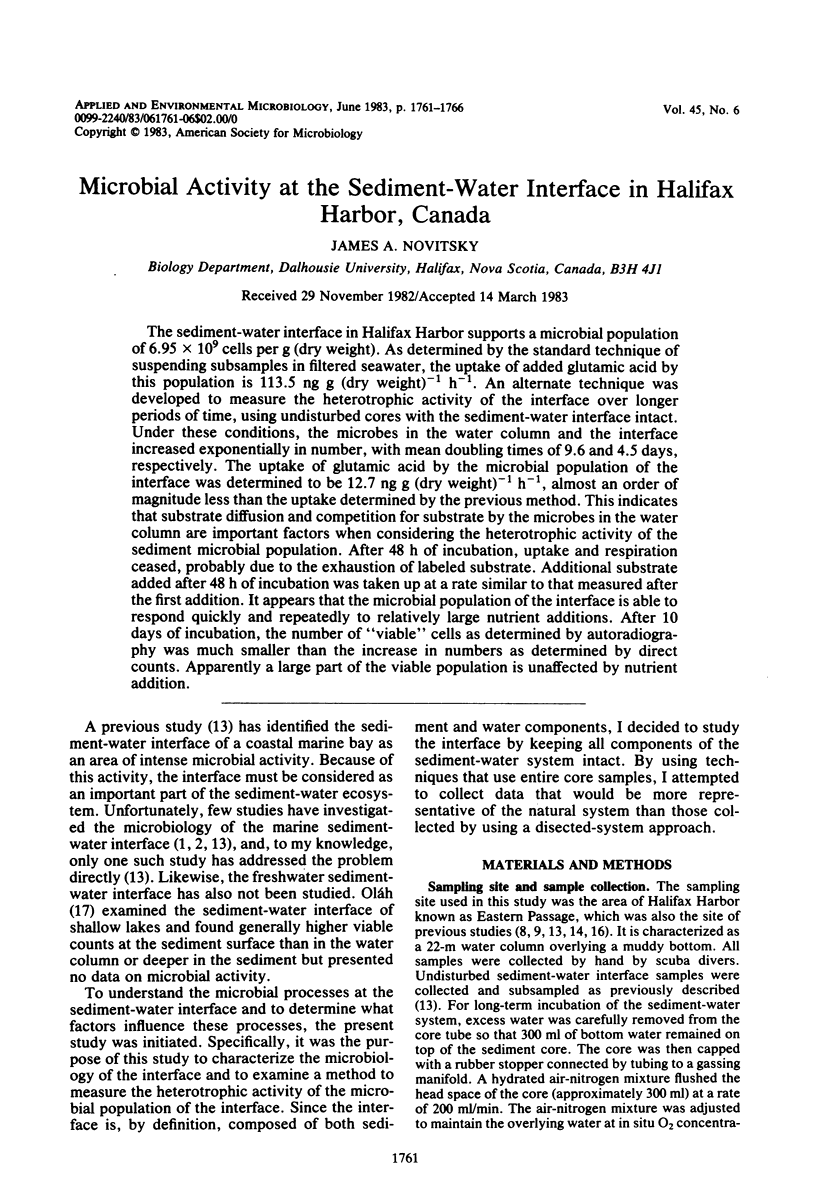
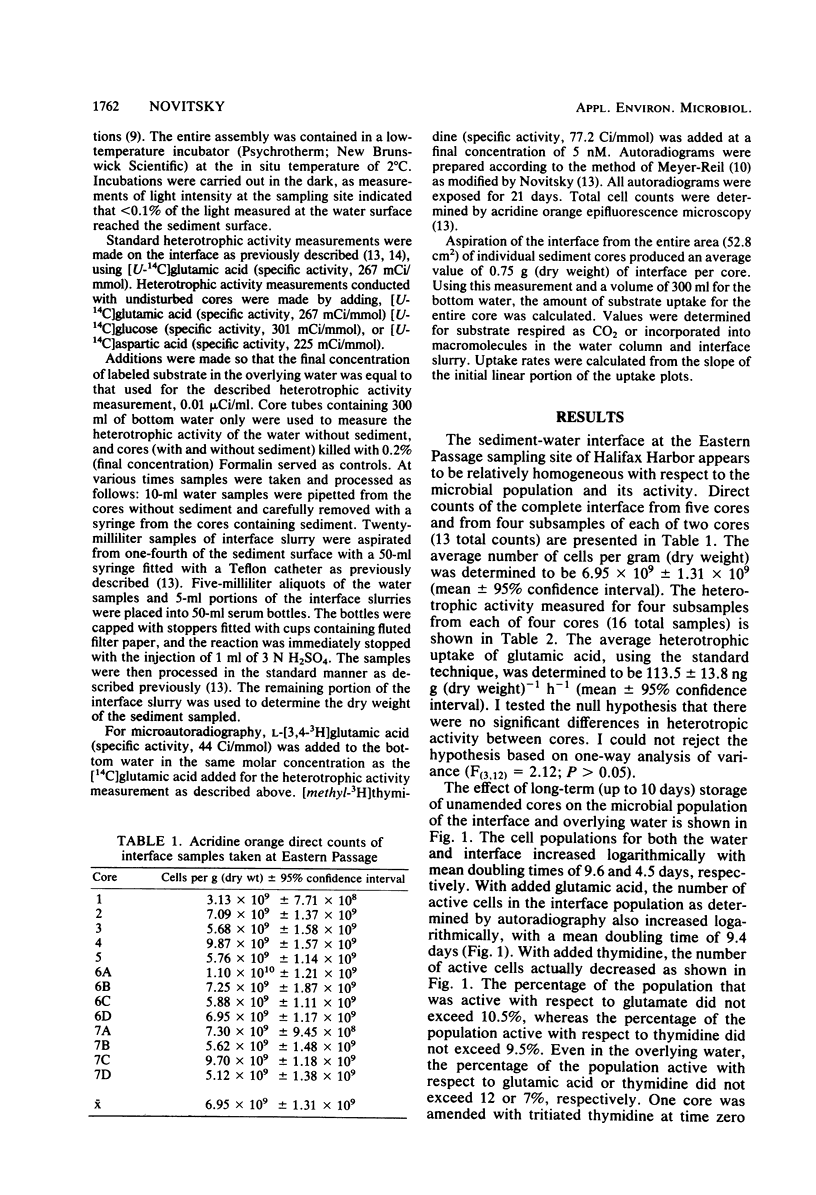
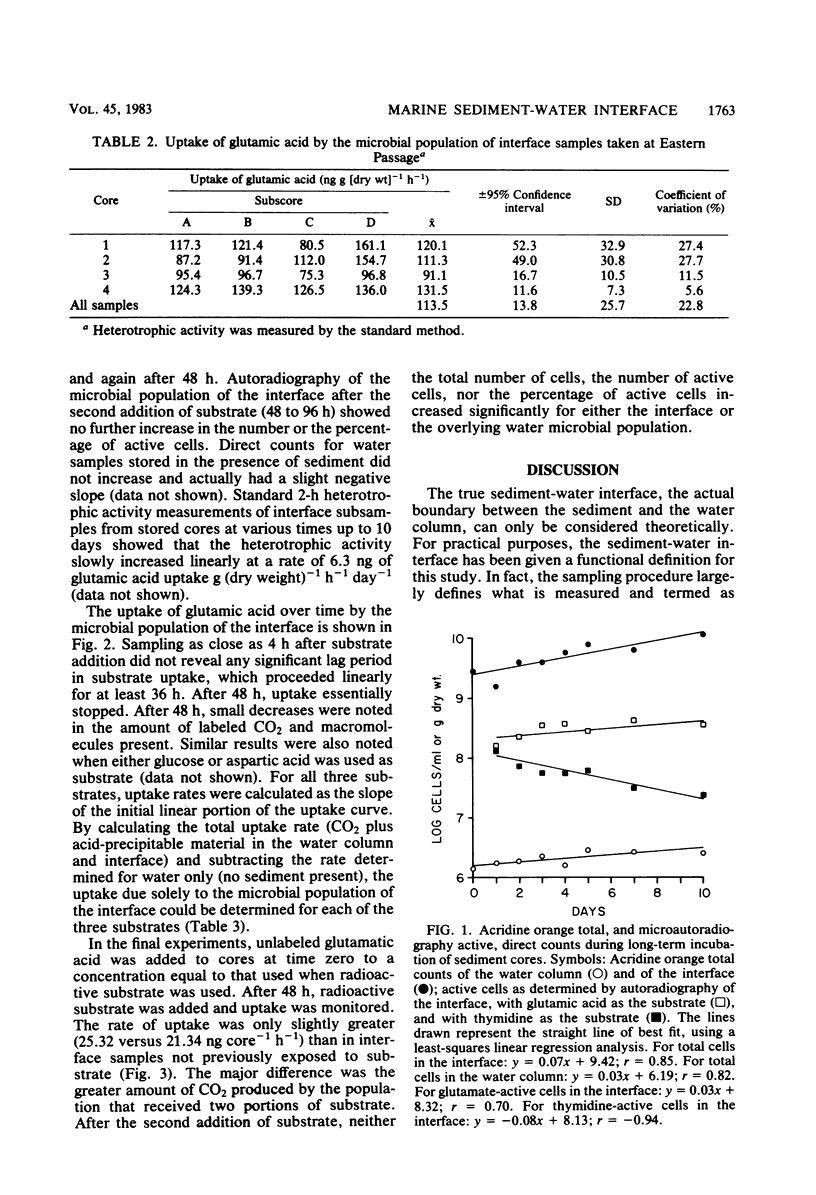
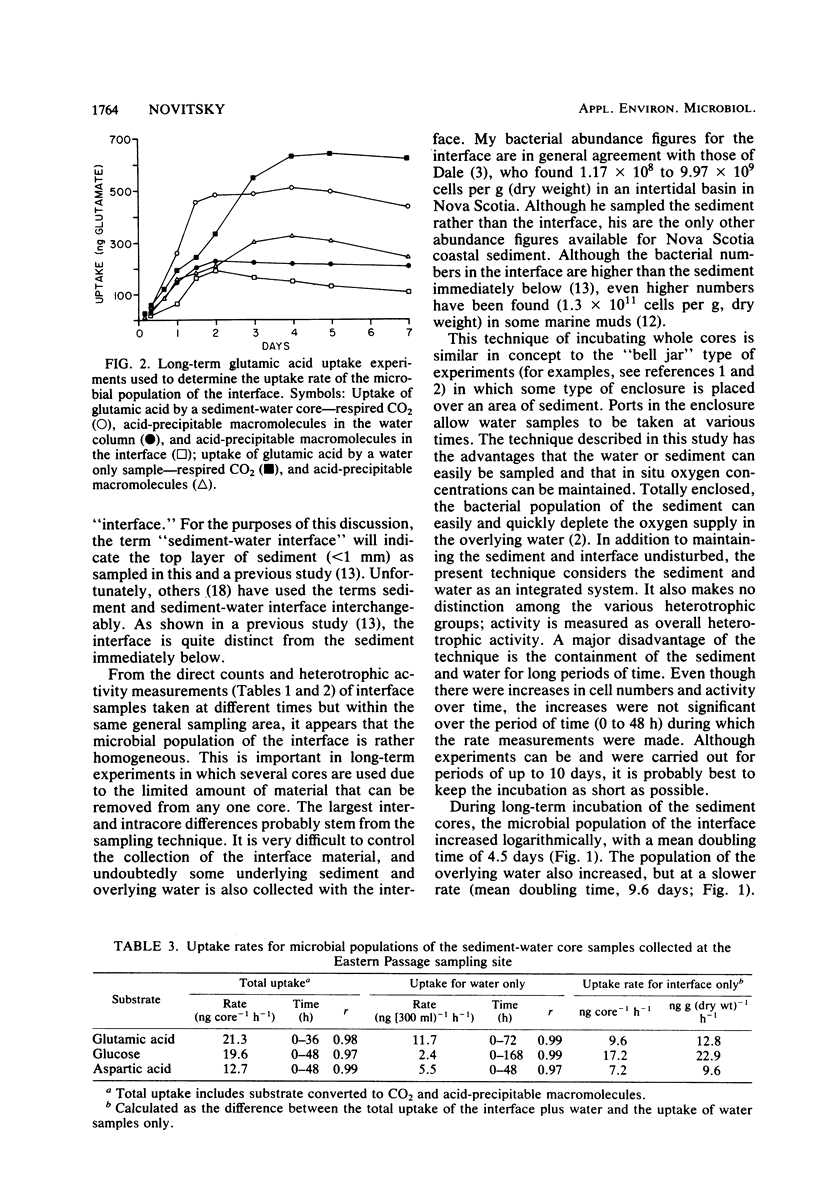
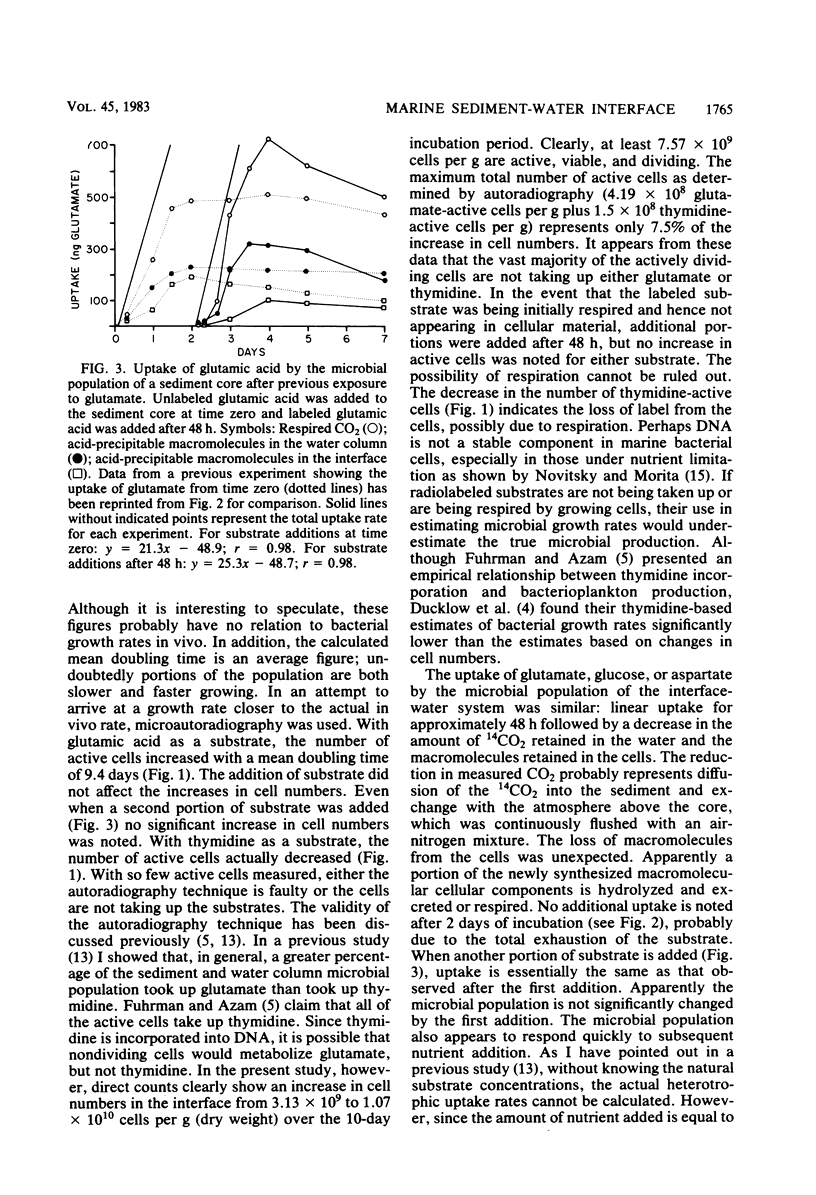
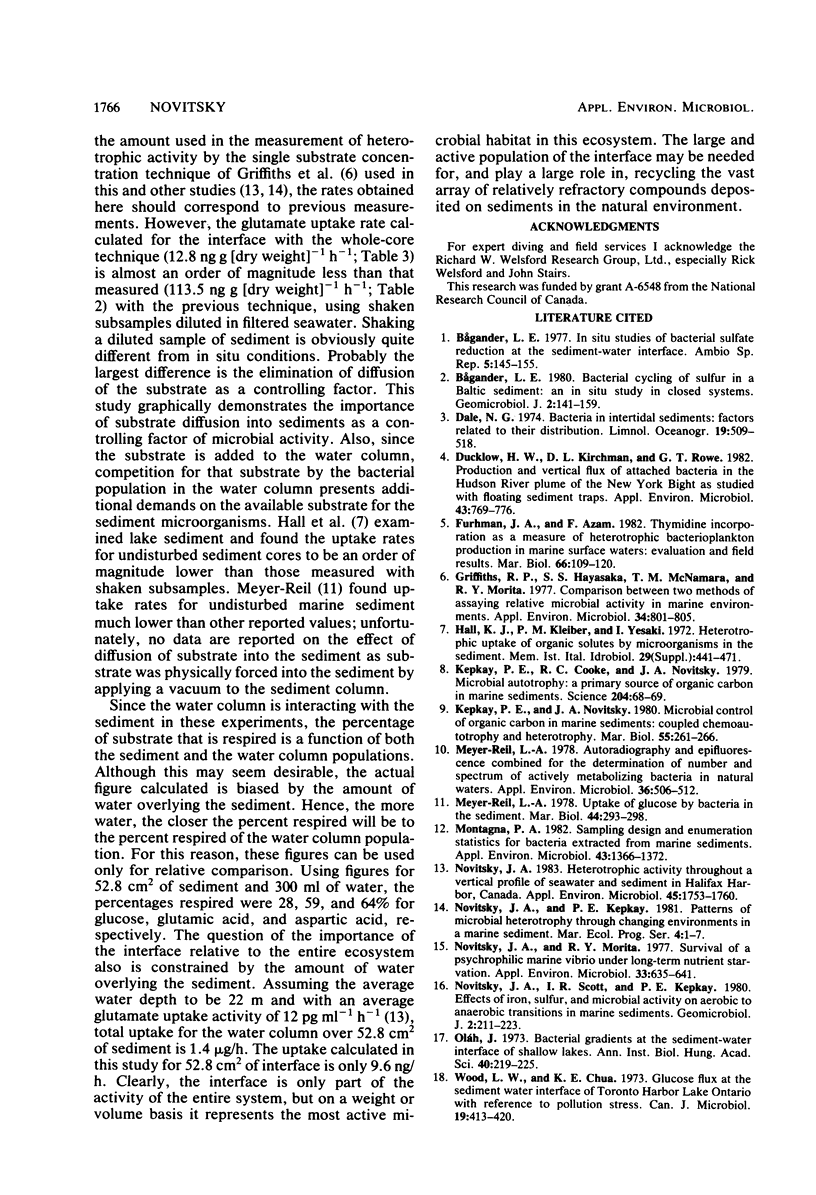
Selected References
These references are in PubMed. This may not be the complete list of references from this article.
- Ducklow H. W., Kirchman D. L., Rowe G. T. Production and vertical flux of attached bacteria in the hudson river plume of the new york bight as studied with floating sediment traps. Appl Environ Microbiol. 1982 Apr;43(4):769–776. doi: 10.1128/aem.43.4.769-776.1982. [DOI] [PMC free article] [PubMed] [Google Scholar]
- Griffiths R. P., Hayasaka S. S., McNamara T. M., Morita R. Y. Comparison between two methods of assaying relative microbial activity in marine environments. Appl Environ Microbiol. 1977 Dec;34(6):801–805. doi: 10.1128/aem.34.6.801-805.1977. [DOI] [PMC free article] [PubMed] [Google Scholar]
- Kepkay P. E., Cooke R. C., Novitsky J. A. Microbial autotrophy: a primary source of organic carbon in marine sediments. Science. 1979 Apr 6;204(4388):68–69. doi: 10.1126/science.204.4388.68. [DOI] [PubMed] [Google Scholar]
- Meyer-Reil L. A. Autoradiography and epifluorescence microscopy combined for the determination of number and spectrum of actively metabolizing bacteria in natural water. Appl Environ Microbiol. 1978 Sep;36(3):506–512. doi: 10.1128/aem.36.3.506-512.1978. [DOI] [PMC free article] [PubMed] [Google Scholar]
- Montagna P. A. Sampling design and enumeration statistics for bacteria extracted from marine sediments. Appl Environ Microbiol. 1982 Jun;43(6):1366–1372. doi: 10.1128/aem.43.6.1366-1372.1982. [DOI] [PMC free article] [PubMed] [Google Scholar]
- Novitsky J. A. Heterotrophic activity throughout a vertical profile of seawater and sediment in halifax harbor, Canada. Appl Environ Microbiol. 1983 Jun;45(6):1753–1760. doi: 10.1128/aem.45.6.1753-1760.1983. [DOI] [PMC free article] [PubMed] [Google Scholar]
- Novitsky J. A., Morita R. Y. Survival of a psychrophilic marine Vibrio under long-term nutrient starvation. Appl Environ Microbiol. 1977 Mar;33(3):635–641. doi: 10.1128/aem.33.3.635-641.1977. [DOI] [PMC free article] [PubMed] [Google Scholar]
- Wood L. W., Chua K. E. Glucose flux at the sediment-water interface of Toronto Harbour, Lake Ontario, with reference to pollution stress. Can J Microbiol. 1973 Apr;19(4):413–420. doi: 10.1139/m73-069. [DOI] [PubMed] [Google Scholar]


